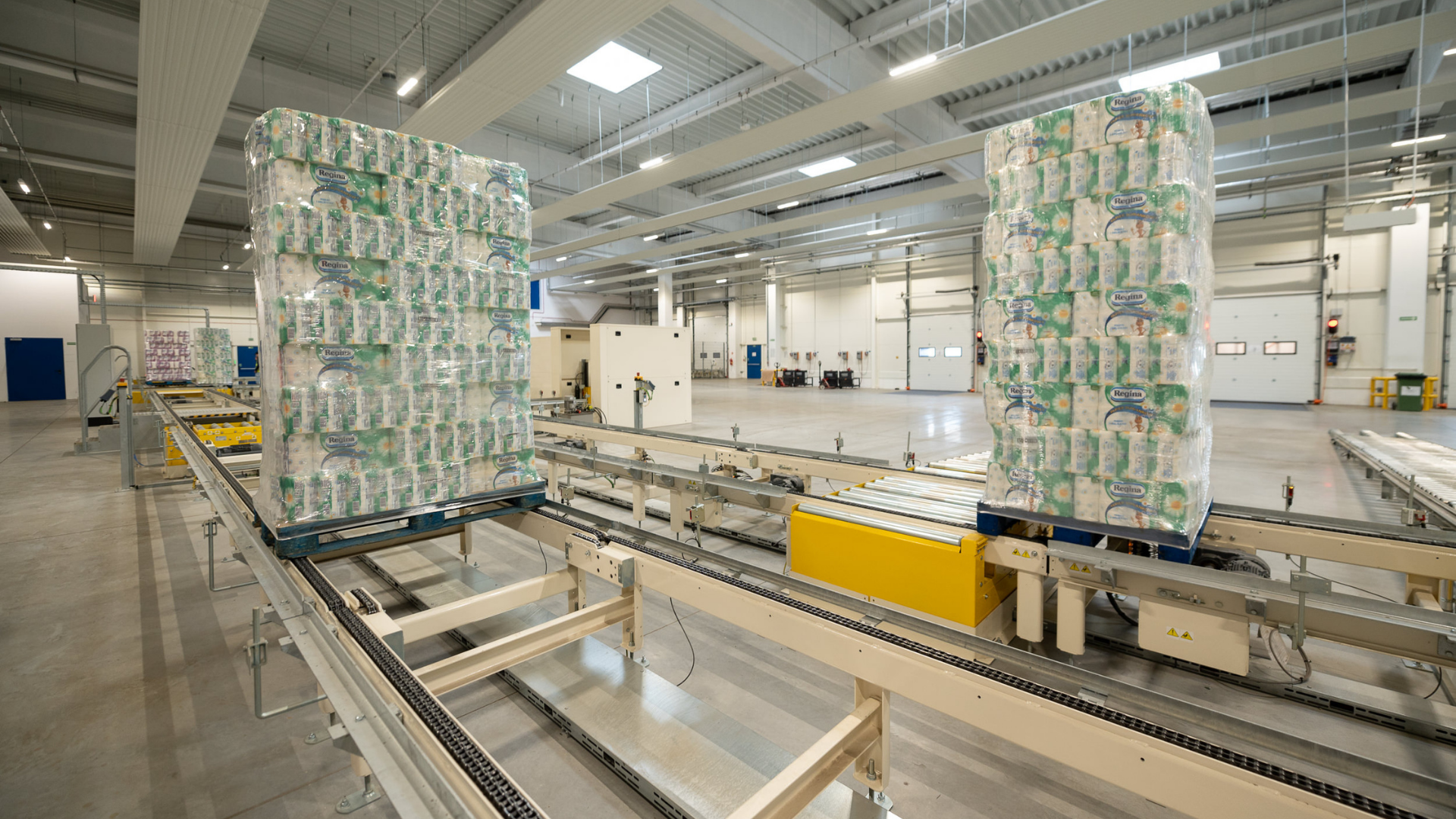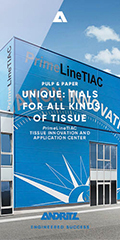
| Archive/Subscribe | TAPPI.org | Advertise | TAPPI Press Catalog | November 2023 |
Sofidel Opens New Automated Warehouse in Poland
Sofidel, one of the world’s leading paper groups for the production of paper for hygienic and domestic use, known particularly in Italy and Europe for its Regina brand, has opened an automated warehouse at its plant in Ciechanów, Poland. The new 11,000 m2 warehouse can handle 32,000 pallets of goods and is designed to ensure higher efficiency and safety standards. The automated warehouse in Ciechanów, whose project was coordinated by Sofidel’s technical department, is the second one built in Europe, the first being in Sweden, and the third in the world, after the one in Circleville, Ohio, United States.
The features of the new warehouse: Efficiency in terms of space, logistics and customer service Pallets of goods are stored in an area of 8,500 m2 spread across eight floors. Six stacker trolleys operate here autonomously, and satellite shuttles transfer or pick up pallets of products in the storage cell assigned by the control system. This solution saves up to 40 percent of warehouse space. Operating under normal 7-day-a-week conditions, product handling is automatic up to the loading docks of departing trucks, where an operator then intervenes. From finished product to warehouse storage, however, the pallet transport process is fully automated, without the use of forklifts. The first part is done using laser-guided shuttles, which move products within the production plant to get them ready for storage. The second, from production to the new warehouse (which is about four hundred meters from the plant), is done using two self-driving trucks, controlled by a GPS system and transponders to ensure safe and reliable positioning. The two vehicles can handle up to two hundred pallets of products per hour. Lastly, through the integration between the enterprise resource planning (ERP) software for managing customer orders and the warehouse management system (WMS) for inventory control, the supply chain department can manage order fulfillment operations more efficiently, automatically recalling product pallets from the warehouse up to the loading docks, with a simplification of logistics and optimization of incoming/outgoing goods flows. This has also increased the number of shipments and reduced delivery times for customers. Safety in terms of accident and fire risk prevention The goods storage warehouse has two features that raise its safety standards: firstly, the fact that workers and moving machinery are not in the same place, which cancels out any residual risk of impact between workers and moving machinery. Secondly, fire risk reduction – as within this space, which is isolated from the rest of the building, has limited access, and is closely monitored, oxygen is reduced to 14 percent: this allows a breathable atmosphere to be maintained, but prevents the development and spread of flames. Evolution of job profiles required Using these technologies, even in this part of the production plant, the figure of worker is increasingly evolving from the logic of a simple operator to that of process controller and warehouse manager. The skills needed to operate the warehouse are shifting from manual handling with forklifts to supervising automated machines. There is therefore a demand for better trained professionals. For this purpose, Sofidel conducted the necessary training for operators of the plant, which allowed them to improve their qualifications and handle more complex processes. The production site in Ciechanów The production site in Ciechanów, where the new warehouse has been opened, is an integrated plant that includes both the paper mill stage, from pulp (raw material of the production process) to paper, and the converting stage, from paper to finished products. The plant’s production capacity recently tripled. Today, the Sofidel plant in Ciechanów occupies an area of 230,000 m2, employs more than 450 people, and produces 90,000 tons of paper annually. Sofidel Poland, which is part of the Sofidel Group, started its operations in 2001. |




